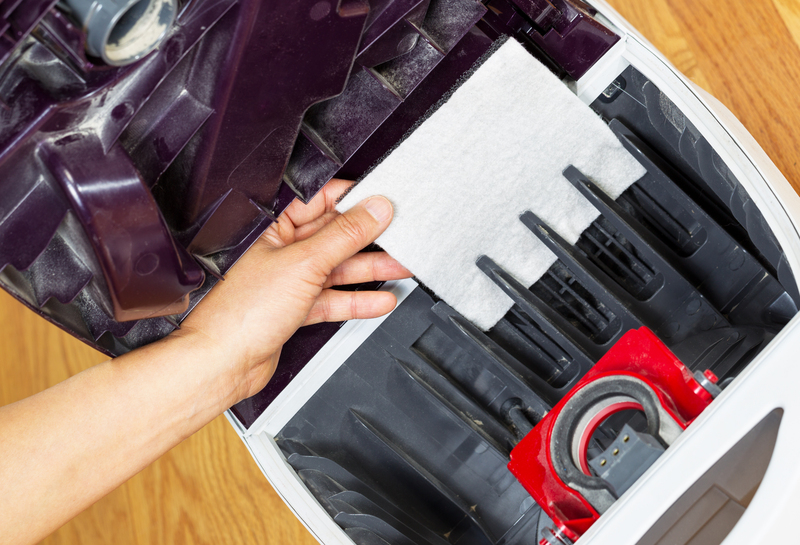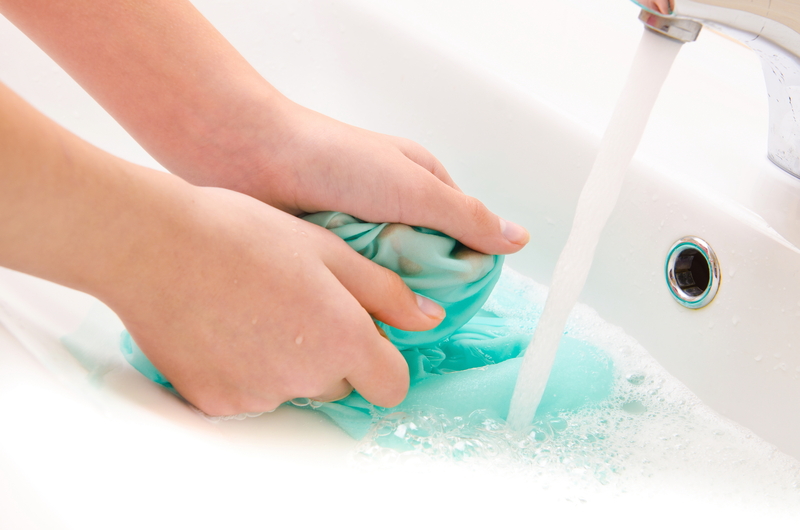Air Quality: The Silent Contributor to Healthy Homes
Posted on 29/06/2025
Air Quality: The Silent Contributor to Healthy Homes
When we talk about healthy homes, most people envision fresh produce in the refrigerator, comfortable furniture, and safe surroundings. However, one critical factor often goes unnoticed: air quality. Clean indoor air is the unsung hero that quietly supports our well-being every day. This comprehensive guide delves into why the quality of air in your home matters, what affects it, and actionable steps for ensuring the healthiest environment possible.

Understanding Indoor Air Quality and Its Importance
Indoor air quality (IAQ) refers to the condition of the air inside your home, measured by the presence of pollutants, humidity, and other factors that impact respiratory health and overall comfort. The average person spends up to 90% of their life indoors, making the air we breathe inside even more critical than outdoor air.
Why is Air Quality Essential for Healthy Living?
- Reduced risk of illness: Cleaner air lowers the likelihood of respiratory diseases, allergies, and asthma attacks.
- Enhanced sleep: Healthy air improves sleep quality, allowing for more restful and restorative nights.
- Improved concentration: High indoor air quality has been linked to better cognitive performance, especially in children and remote workers.
- Long-term well-being: Lower exposure to airborne toxins can reduce risks for chronic diseases such as cardiovascular issues and even cancer.
The Often Overlooked Hazards of Poor Air Quality
Invisible threats like volatile organic compounds (VOCs), dust mites, mold spores, and bacteria can accumulate indoors. According to the Environmental Protection Agency (EPA), indoor air pollution levels can be 2 to 5 times higher than outdoor levels. Over time, exposure leads to symptoms ranging from mild irritation of the eyes, nose, and throat to more severe long-term effects such as respiratory illnesses.
Major Contributors to Indoor Air Pollution
Let's explore the key culprits that can negatively impact the air quality in your home:
- Household Cleaning Products: Many contain chemicals that release VOCs into the air, causing irritation and health risks.
- Poor Ventilation: Inadequate airflow allows pollutants and moisture to become trapped, fostering mold and mildew growth.
- Smoking Indoors: Cigarette smoke is rich in toxins and can linger in furnishings and surfaces.
- Pet Dander: Pets shed microscopic skin flakes and hair, a common allergen source.
- Heating and Cooking Appliances: Stoves, ovens, and fireplaces can emit carbon monoxide and other pollutants.
- Outdoor Pollutants: Dust, pollen, and vehicle emissions can enter through windows and doors.
How Air Quality Directly Impacts Your Health
Constant exposure to poor air quality--even if not immediately noticeable--can have a cumulative effect on your well-being. Let's examine the myriad ways the air you breathe at home can impact your family's health.
Short-Term Effects of Poor Indoor Air
- Irritation of eyes, nose, and throat
- Coughing, sneezing, and fatigue
- Headaches and dizziness
- Aggravation of preexisting allergies and asthma
Long-Term Health Impacts
- Increased risk for asthma and severe allergies
- Development of chronic respiratory diseases
- Cardiovascular diseases
- Potential for certain cancers with high exposure to carcinogens
The Science Behind Indoor Air Quality
Numerous studies support the strong link between good air quality in homes and robust health. For example, researchers have found that levels of formaldehyde and other VOCs spike after certain activities, such as painting or cleaning with harsh chemicals, highlighting the importance of product choices and ventilation.
Additionally, humidity plays a significant role. Too much moisture leads to mold and dust mite proliferation, while very low humidity increases the risk of irritated respiratory passages. Optimal indoor humidity is typically between 30% and 50%.
Testing and Monitoring Air Quality at Home
You can't manage what you can't measure. Here's how to determine if your home's air quality needs improvement:
- Purchase an indoor air quality monitor: These devices detect particles, VOCs, humidity, and even carbon dioxide.
- Use radon and carbon monoxide detectors: These gases are silent threats; undetectable without a dedicated monitor.
- Observe physical symptoms: Recurring headaches, allergy flare-ups, or musty odors may signal underlying issues.
Professional Assessment vs. DIY Testing
For those with a family history of allergies or respiratory conditions, or if your home has ever experienced water damage, a professional inspection may be warranted. Professionals utilize advanced tools to test for mold, asbestos, radon, and more, providing a detailed risk profile.
Strategies for Improving Indoor Air Quality
Ensuring a healthy home environment starts with proactive changes. Here are key steps to turn your house into a haven for cleaner, safer air:
Improve Ventilation
- Open windows and doors: Even a few minutes daily can refresh stale indoor air.
- Use exhaust fans: Install or turn on fans in the kitchen and bathroom to remove pollutants directly at the source.
- Consider mechanical ventilation: Systems like Heat Recovery Ventilators (HRVs) exchange stale indoor air with fresh outdoor air while minimizing energy loss.
Adopt Smart Cleaning Practices
- Choose non-toxic cleaning products: Look for labels such as "low-VOC" or "eco-friendly."
- Vacuum regularly: Use a vacuum with a HEPA filter to trap allergens and dust.
- Minimize clutter: Clutter attracts and traps dust, making cleaning more difficult.
Control Sources of Indoor Pollution
- Don't smoke indoors: If you or anyone in your home smokes, always step outside.
- Restrict burning candles and incense: Use them sparingly, as they release particulate matter and VOCs.
- Maintain appliances: Service heaters, air conditioners, and water heaters annually to prevent leaks.
Monitor and Adjust Humidity
- Use dehumidifiers: In damp climates, these appliances prevent mold and mildew.
- Add humidity in dry seasons: Humidifiers relieve the air and your body's airways in winter.
- Aim for 30-50% humidity: Use a hygrometer for accurate readings.
Leverage Air Purifiers and Houseplants
- HEPA air purifiers: Choose a purifier sized for your room to remove fine particulates, pollen, and dander.
- Consider activated carbon filters: These neutralize odors and absorb VOCs.
- Houseplants: Select varieties like spider plants, peace lilies, and snake plants for modest pollutant removal and added oxygen.
Avoiding Common Mistakes That Harm Home Air Quality
- Don't block air vents or ducts: This restricts airflow, leading to uneven ventilation and increased dust accumulation.
- Never ignore water leaks: Moisture leads to mold--address leaks as soon as possible.
- Avoid excessive use of synthetic fragrances: Air fresheners often contain harmful chemicals; opt for natural alternatives like essential oil diffusers.
How Renovations Affect Indoor Air Quality
Home improvement projects, such as painting, flooring installation, or remodeling, can introduce significant air contaminants. Volatile compounds from fresh paint, adhesives, and new carpets can persist for weeks.
- Choose low-VOC or zero-VOC paints and materials whenever possible.
- Ventilate the area thoroughly during and after work.
- Seal off project zones to keep dust and fumes out of main living areas.
Protecting Vulnerable Family Members
Children, elderly individuals, and those with preexisting health conditions are especially susceptible to poor air quality. For these members of your household:
- Consider using air purifiers in bedrooms and nurseries.
- Make extra efforts to keep carpets and bedding clean and dust-free.
- Limit pet access to sleeping areas.
The Cost Benefits of Maintaining Good Indoor Air Quality
Investing in better air quality for your home isn't just good for health--it can save money over time. Cleaner air reduces doctor visits, medication costs, and missed days of school or work. Plus, maintaining HVAC systems and appliances improves energy efficiency, lowering utility bills.

Conclusion: Breathing Easier in Healthy Homes
Air quality is the silent contributor to maintaining a healthy home environment. It's easy to overlook because we can't always see or smell what's in the air, but its effects are profound. By taking the right steps--improving ventilation, choosing safer products, monitoring humidity, and addressing pollutants--you can enjoy cleaner, fresher air every day.
Commit to making air quality a central part of your healthy lifestyle. The benefits, both immediate and long-term, will resonate in the health, comfort, and happiness of your entire household.
Frequently Asked Questions About Air Quality in Homes
-
Q: How often should air filters be replaced?
A: Most filters should be replaced every 1-3 months, depending on use and specific recommendations from your manufacturer. -
Q: What's the best way to test for mold?
A: Visual inspection and professional mold testing provide the most accurate results, especially if you notice persistent musty odors or health symptoms. -
Q: Are houseplants really effective in cleaning indoor air?
A: While plants offer some benefits, their effect is modest compared to mechanical air purification. Use them as a supplementary strategy, not a primary solution.
Ready to improve the air quality in your home? Start with small changes today, and breathe easier knowing you've taken an essential step towards lasting health and comfort.





